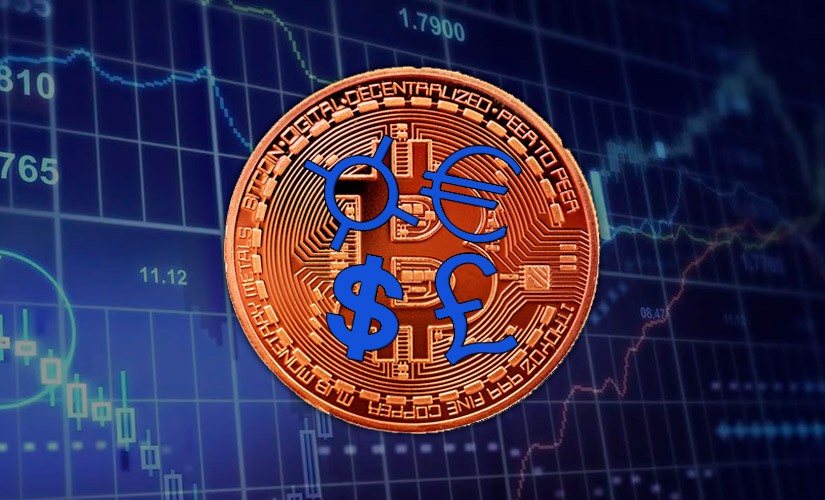Uncertainty in the market makes investors look for future events that will affect the bitcoin exchange rate. Preferably for the better. One of the key events for the first cryptocurrency is halving. It is less than a year away. What should traders expect after the halving?
Bitcoin halving, i.e. halving the reward per block (exists in several other digital assets) is a periodic event, each time expected and discussed in the industry. The effect of halving on the price of a cryptocurrency is not instantaneous. It is a long-term influence factor, as with decreasing supply and constant demand, the price should rise. Let’s repeat: with constant, or better yet, increasing demand.
Why halving is necessary and how it works
Satoshi Nakamoto conceived bitcoin as a deflationary currency as opposed to government (fiat) inflationary currencies. “Regular” currencies are constantly issued by central banks at the request of the government to cover state budget expenditures and balance the economy. This policy guarantees the constant depreciation of fiat currencies. In order to ensure a reduction in issuance, the number of bitcoins issued by bitcoin miners must gradually decrease to eventually, after some hundred years, drop to almost zero. This has been realized using an algorithm called halving.
Technically, halving happens without external influence or control. All miner wallets operating according to the protocol standards will generate half the reward after a certain block number. In Bitcoin, halving occurs every 210000 blocks, which corresponds to about four years if hash rate and difficulty do not change dramatically in one direction.
The program code of all “correct” wallets guarantees halving after the block assigned by the algorithm. If some miner changes his wallet so that the reward does not decrease, all other wallets in the network will ignore the blocks created by him, i.e. he will work for nothing.
5020 $
신규 사용자를 위한 보너스!
바이비트는 암호화폐 거래를 위한 편리하고 안전한 조건을 제공하며, 낮은 수수료, 높은 수준의 유동성, 시장 분석을 위한 최신 도구를 제공합니다. 현물 및 레버리지 거래를 지원하며 직관적인 인터페이스와 튜토리얼을 통해 초보자와 전문 트레이더를 돕습니다.
100 $ 보너스 획득
신규 사용자를 위해!
암호화폐 세계에서 빠르고 안전하게 여정을 시작할 수 있는 최대 규모의 암호화폐 거래소입니다. 이 플랫폼은 수백 개의 인기 자산, 낮은 수수료, 거래 및 투자를 위한 고급 도구를 제공합니다. 간편한 등록, 빠른 거래 속도, 안정적인 자금 보호 기능을 갖춘 바이낸스는 모든 수준의 트레이더에게 최고의 선택입니다!
A successful 51% attack could theoretically allow an attacker to change many protocol parameters, including the value of the emission. However, unlike “double-spending”, which can be pulled off without formally breaking the protocol, blocks with modified emission will be rejected by the rest of the wallets in the same way. The victorious super miner will be left with his “extra” bitcoins all alone, as he will only be able to send them to his associates who have also set up an altered wallet.
In Bitcoin and its direct forks such as Bitcoin Cash and Litecon, halving is scheduled every four years. However, in many later blockchains, this procedure has been abandoned. For example, in Efirium, while it was running on proof-of-work, the amount of ETH issuance in a block was manually regulated by developers and changed with the next protocol update.
It should be noted that halving is not related to the complexity recalculations and happens in between. This is easily verified by dividing 210000 by 2016. However, the constant increase in complexity brings the next halving closer, as blocks are generated in less than 10 minutes on average. For example, due to the dramatic increase in complexity in 2013-2014, the time between halwings was reduced by almost five months. The first occurred on November 28, 2012, and the second on July 9, 2016. The third one happened in May 2020, as the network hashrate grew slower due to the gradual saturation of the market with asics.
What happens after the halving
Bitcoin’s next halving will happen at block 840000, currently expected in April 2024. However, investors are already preparing for it now.
As mentioned above, halving is a long-term factor. Moreover, it is a background factor that cannot compete with macroeconomic and political events in terms of speed of impact. For example, in the fall of 2013, the Chinese government first “pretended” that it was going to allow the circulation of bitcoin, and then suddenly began to ban cryptocurrency transactions. As a result, bitcoin first skyrocketed from $100 to $1200 in a matter of months and then collapsed to $140. However, since the day the blockchain was launched, bitcoin has continued to rise inexorably, and each deep correction has remained above the previous one. Halving is one of the reasons for this.
History shows that a wave of sharp bitcoin growth has occurred after each halving, but in a period of about a year. For example, after the November 2012 halving, there were two waves of growth within a year: in May and November. After the second halving in June 2016, growth occurred in October-November 2017. And finally, after the third halving in May 2020, Bitcoin updated the historical maximum in the summer of 2021.
Each Bitcoin rate growth and subsequent correction were caused by completely different reasons, but the annual interval with halving was maintained with an acceptable error. Three times is already indicative of a trend. That’s why many investors expect bitcoin’s indispensable growth in late 2024 – the first half of 2025. And it does not matter at all what it will be caused by.
Only miners are not happy about the halving. Their income instantly drops by half, while their expenses remain the same, and often mining after halving can become unprofitable. In this case, the miner has two choices: to turn off the equipment or to continue mining at a loss, waiting for the rate to at least double. This is one of the inevitable but foreseeable business risks for miners.
텍스트에 오류가 있나요? 마우스로 강조 표시하고 Ctrl + 입력합니다.
작성자: 사이페데인 암무스암호화폐 경제학 전문가입니다.















